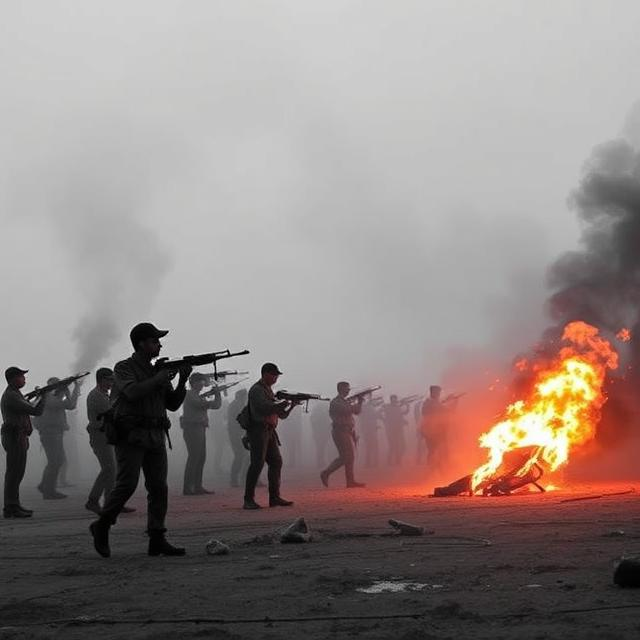Introduction
The Agniveer Plan, introduced by the Government of India in 2022 as part of the Agnipath Scheme, represents a transformational shift in the recruitment process for the Indian Armed Forces. This scheme seeks to modernize the military, reduce the financial burden of long-term pensions, and create a younger, tech-savvy force. However, the plan has sparked debates regarding its impact on national security, military efficiency, and socio-economic stability.
This article critically examines the Agniveer Plan in the context of India’s defence requirements, its advantages, potential challenges, and long-term implications for the country’s military and society.
Understanding the Agniveer Plan
The Agniveer Plan is a recruitment model under which young individuals between 17.5 to 21 years of age are enrolled in the Indian Armed Forces for a short tenure of four years. These recruits, called Agniveers, undergo military training and serve in various roles across the Indian Army, Navy, and Air Force. After the completion of their tenure, only 25% of Agniveers are retained for further service, while the remaining 75% exit the forces with a financial package but without pension benefits.
Key Features of the Agniveer Plan
- Short-Term Service: Recruits serve for four years, including six months of training and three-and-a-half years of active duty.
- Limited Permanent Absorption: Only 25% of Agniveers are selected for long-term service based on merit and organizational needs.
- Financial Package: On completion of tenure, exiting Agniveers receive a Seva Nidhi package of 11.71 lakh, but no pension.
- Age Group Eligibility: Open to candidates aged 17.5 to 21 years.
- Nationwide Implementation: Applies to all three wings – Army, Navy, and Air Force.
Why Was the Agniveer Plan Introduced?
The Indian government launched the Agniveer Plan to address several key challenges in the defence sector. Some of the major reasons include:
1. Reducing the Burden of Pension Expenditure
The pension bill of the Indian Armed Forces has been increasing significantly, affecting the defence budget’s allocation for modernization and equipment procurement. By introducing a short-term service model, the government aims to cut pension costs and redirect funds toward military modernization.
2. Creating a Younger and Agile Military
Currently, a significant portion of India’s military personnel serve for long durations, leading to an aging force. The Agniveer Plan ensures that the armed forces maintain a lower average age (around 24-26 years), making them physically fitter and technologically adaptive.
3. Enhancing Defence Readiness
With emerging security threats from China and Pakistan, India requires rapid response forces that can quickly adapt to modern warfare, including cyber, space, and drone warfare. The scheme helps in creating a tech-savvy, flexible military force.
4. Leveraging a Large Youth Population
India has a huge youth demographic. The Agniveer Plan allows the military to harness young talent while providing skill development opportunities to those who exit after four years.
5. Encouraging Civil-Military Integration
The government envisions that Agniveers, after their tenure, will contribute to various sectors like police forces, paramilitary services, and private security firms, ensuring a disciplined and trained workforce in civilian life.
Analysis of the Agniveer Plan in Light of India’s Defence Needs
While the Agniveer Plan aligns with India’s long-term vision of an efficient, cost-effective, and modern military, its implications need to be analyzed across multiple dimensions:
1. Impact on Combat Readiness and Operational Effectiveness
- Advantage: The scheme ensures a younger, more physically fit force, which is crucial for handling intensive combat operations.
- Challenge: Four years is a relatively short period for military training. Traditional service durations allow soldiers to develop deep expertise in specialized combat roles, whereas short-term recruitment might lead to a less experienced force.
2. Financial Implications for Defence Budget
- Advantage: Reduction in pension and salary expenses will free up funds for defence modernization, allowing investment in next-generation weaponry, cyber warfare, artificial intelligence, and space defence systems.
- Challenge: The financial package for exiting Agniveers still requires substantial funds, and recruitment costs will increase due to high turnover.
3. Technological Adaptability and Skill Development
- Advantage: The scheme enables India to recruit digitally native youth who can be trained in cyber warfare, AI-driven defence systems, and high-tech military equipment.
- Challenge: Since 75% of Agniveers exit after four years, the long-term retention of specialized skills remains uncertain.
4. National Security and Strategic Considerations
- Advantage: A rapid, scalable recruitment model ensures quick force mobilization in case of conflicts or emergencies.
- Challenge: Short-term service might lead to loyalty concerns and reduced unit cohesion, which are essential for effective combat teamwork.
5. Impact on Society and Employment
- Advantage: Agniveers, after their tenure, will be a disciplined, trained workforce, improving job opportunities in police forces, paramilitary organizations, and private security sectors.
- Challenge: The absence of a pension and job guarantee post-service may lead to employment insecurity, increasing dissatisfaction among those who exit after four years.
Challenges and Criticism of the Agniveer Plan
Despite its strategic vision, the Agniveer Plan faces several criticisms:
1. Job Insecurity Post-Service
The biggest concern is what happens to the 75% of Agniveers who are not absorbed into the armed forces. While they receive a financial package, there is no guaranteed employment afterward.
2. Impact on Military Morale
Short-term recruitment may lead to a lack of commitment and reduced espirit de corps among soldiers, which is essential for military effectiveness.
3. Skill Development vs. Experience Loss
While Agniveers will acquire skills, combat roles require years of hands-on experience. A frequent exit of trained personnel may weaken India’s long-term combat preparedness.
4. Risk of Militarization of Society
There are concerns that trained ex-soldiers without jobs could be misused by anti-social elements or radicalized, leading to potential security threats.
Recommendations for Strengthening the Agniveer Plan
To ensure the success of the Agniveer Plan while addressing its challenges, the following measures should be implemented:
- Job Placement Programs: Establish a structured transition program where private companies, paramilitary forces, and government agencies guarantee employment for ex-Agniveers.
- Skill Certification: Provide nationally recognized skill certificates to Agniveers to ease their transition into civilian jobs.
- Longer Training Periods: Increase the training duration from six months to one year to enhance combat skills.
- Higher Retention Percentage: Instead of only 25% absorption, a slightly higher percentage of Agniveers should be retained to ensure continuity and expertise.
- Pension or Gratuity System: Introduce a partial pension or gratuity model for Agniveers to provide financial security after service.
Conclusion
The Agniveer Plan is a bold and transformative military reform aimed at modernizing India’s armed forces while reducing long-term financial burdens. It offers several advantages, including a younger military force, financial savings, and technological adaptability. However, it also presents challenges related to combat effectiveness, job security, and military morale.
For the plan to achieve its full potential, policy refinements, post-service employment strategies, and enhanced training programs must be implemented. If executed correctly, the Agniveer Plan could emerge as a game-changer in India’s defence landscape, aligning military preparedness with the country’s long-term strategic needs.




